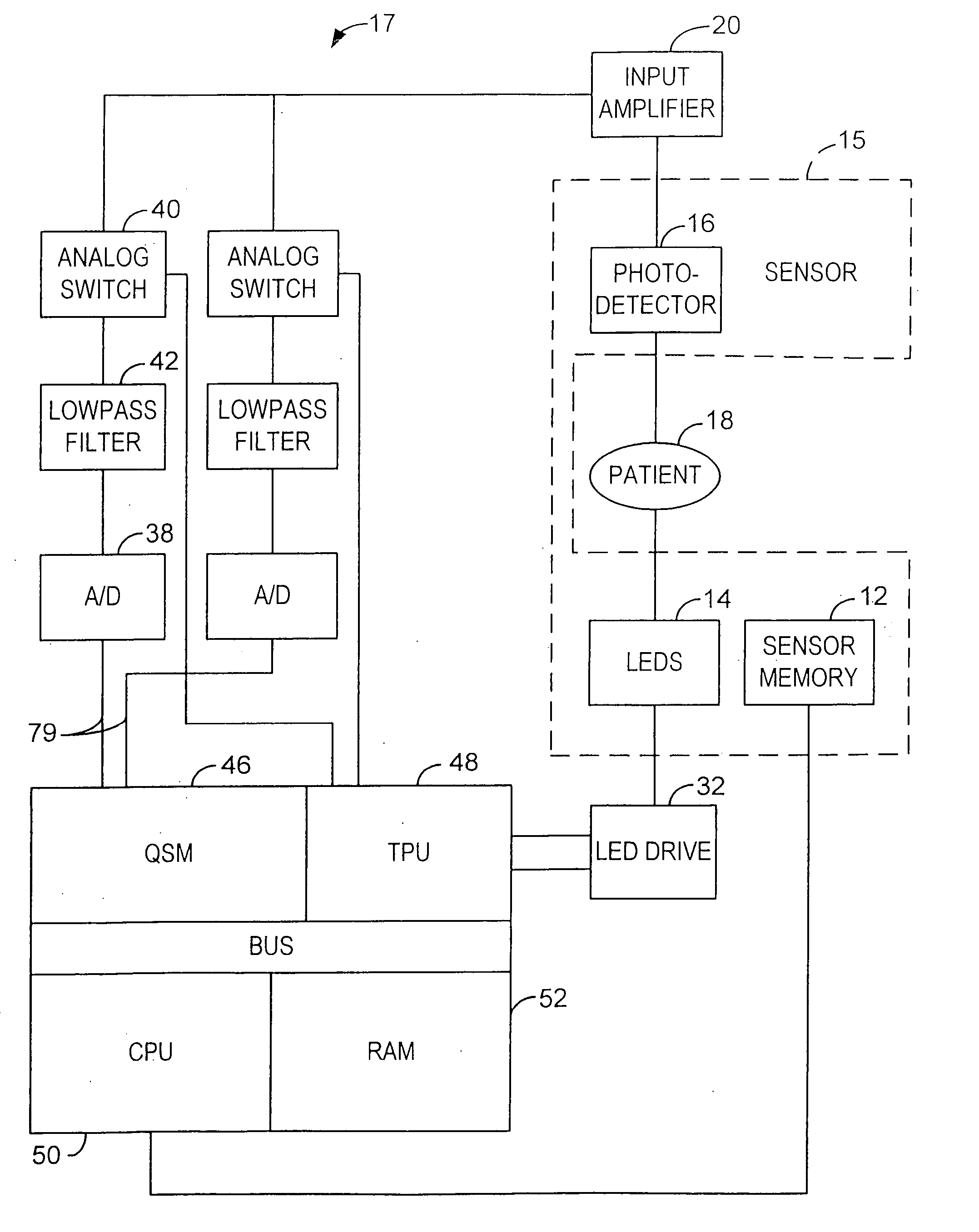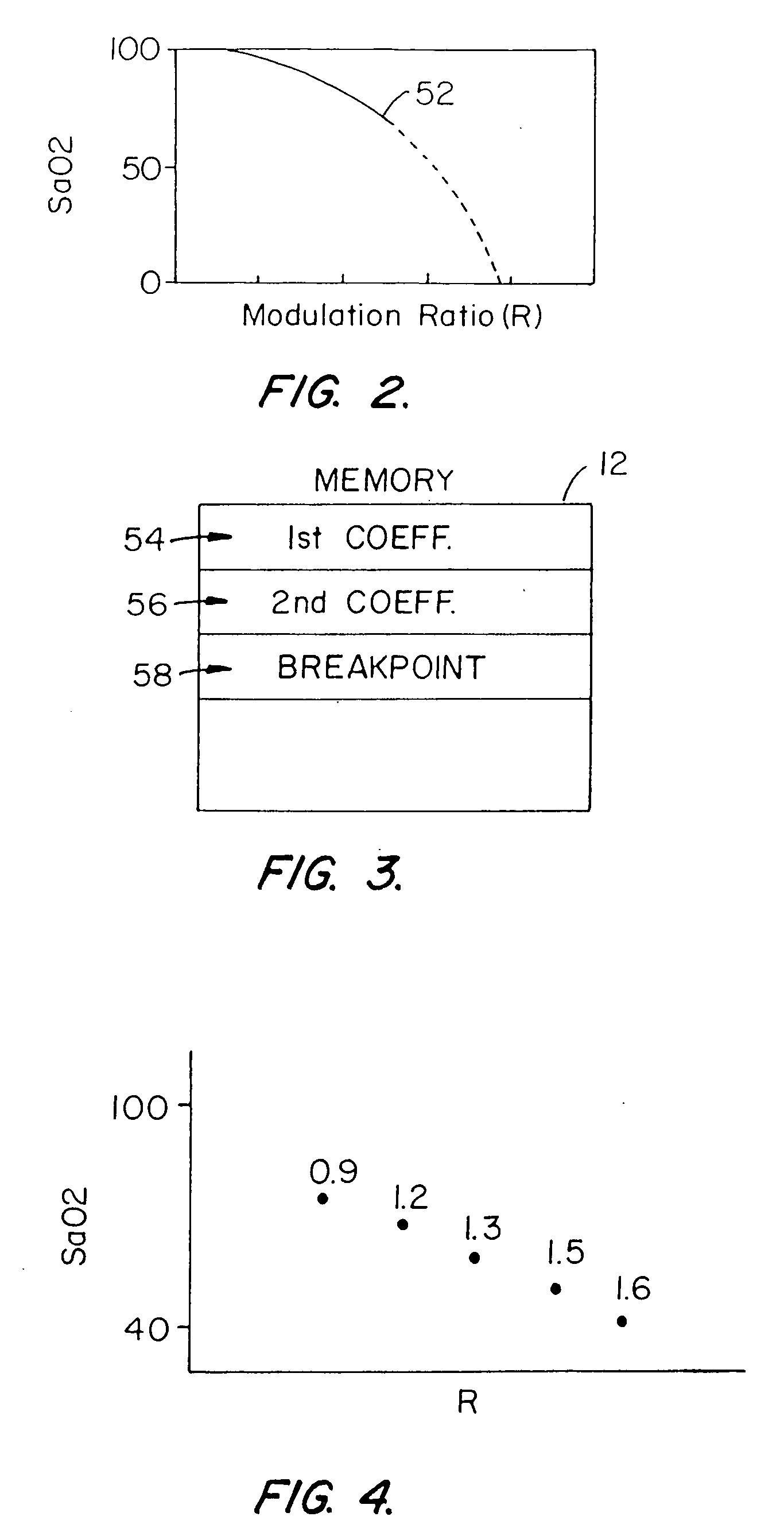Pulse oximeter sensor with piece-wise function
- Summary
- Abstract
- Description
- Claims
- Application Information
AI Technical Summary
Benefits of technology
Problems solved by technology
Method used
Image
Examples
Embodiment Construction
Sensor Reader / Monitor
[0024]FIG. 1 is a block diagram of one embodiment of the invention. FIG. 1 shows a pulse oximeter 17 (or sensor reader) which is connected to a non-invasive sensor 15 attached to patient tissue 18. Light from sensor LEDs 14 passes into the patient tissue 18, and after being transmitted through or reflected from tissue 18, the light is received by photosensor 16. Either two or more LEDs can be used depending upon the embodiment of the present invention. Photosensor 16 converts the received energy into an electrical signal, which is then fed to input amplifier 20.
[0025] Light sources other than LEDs can be used. For example, lasers could be used, or a white light source could be used with appropriate wavelength filters either at the transmitting or receiving ends.
[0026] Time Processing Unit (TPU) 48 sends control signals to the LED drive 32, to activate the LEDs, typically in alternation. Again, depending on the embodiment, the drive may control two or any add...
PUM
 Login to View More
Login to View More Abstract
Description
Claims
Application Information
 Login to View More
Login to View More - R&D
- Intellectual Property
- Life Sciences
- Materials
- Tech Scout
- Unparalleled Data Quality
- Higher Quality Content
- 60% Fewer Hallucinations
Browse by: Latest US Patents, China's latest patents, Technical Efficacy Thesaurus, Application Domain, Technology Topic, Popular Technical Reports.
© 2025 PatSnap. All rights reserved.Legal|Privacy policy|Modern Slavery Act Transparency Statement|Sitemap|About US| Contact US: help@patsnap.com



